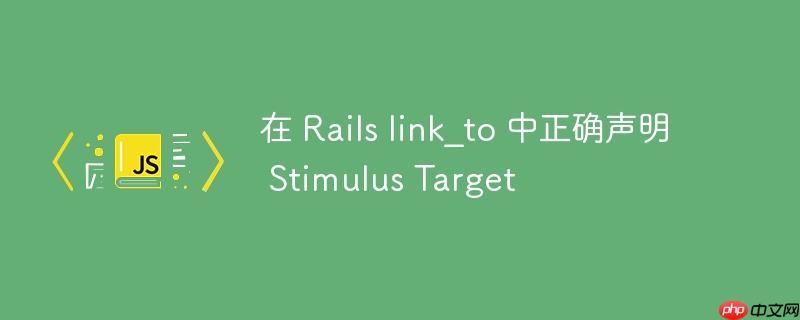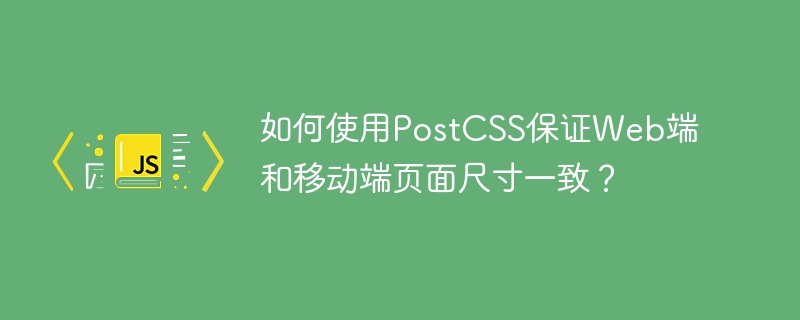
本文旨在解决在 Rails 应用中使用 Stimulus.JS 时,如何正确地在 link_to 辅助方法中声明和使用 target。我们将通过一个倒计时的例子,讲解如何将 link_to 元素与 Stimulus controller 关联,并解决常见的 “Missing target element” 错误。本文将提供清晰的代码示例和详细的解释,帮助你更好地理解和应用 Stimulus.js。
Stimulus Target 声明与使用详解
在使用 Stimulus.js 构建交互式 Rails 应用时,正确地声明和使用 target 至关重要。Target 允许 controller 直接与 html 元素交互,从而实现动态更新和行为控制。本文将通过一个倒计时的例子,详细介绍如何在 Rails 的 link_to 辅助方法中正确声明和使用 target,避免常见的错误。
问题分析
在提供的示例中,开发者尝试在 link_to 元素上实现一个倒计时功能,但遇到了 “Missing target element” 错误。主要问题在于 target 的声明方式和 controller 的作用域。
解决方案
解决此问题的关键是将所有相关的 HTML 元素包裹在一个具有 data-controller 属性的父元素中,然后在这个父元素上声明所有 target。
HTML 结构:
<span data-controller="countdown"> <span data-countdown-target="countdown"></span> <%= link_to "close", "#", data: { countdown_target: "link" } %> </span>
解释:
- data-controller=”countdown”: 这定义了 Stimulus controller 的作用域。所有子元素都将在这个 controller 的上下文中运行。
- <span data-countdown-target=”countdown”></span>: 这声明了一个名为 countdown 的 target,可以在 controller 中通过 this.countdownTarget 访问。
- <%= link_to “close”, “#”, data: { countdown_target: “link” } %>: 这使用 Rails 的 link_to 辅助方法创建了一个链接,并声明了一个名为 link 的 target。注意 data: { countdown_target: “link” } 的写法,它将链接元素注册为 controller 的 link target。
Stimulus Controller 代码:
import { Controller } from "stimulus"; export default class extends Controller { Static targets = ["countdown", "link"]; connect() { this.startCountdown(); } startCountdown() { let remainingTime = 8; this.updateCountdown(remainingTime); const countdownInterval = setInterval(() => { remainingTime--; this.updateCountdown(remainingTime); if (remainingTime <= 0) { clearInterval(countdownInterval); this.hideCountdown(); this.enableLink(); } }, 1000); } updateCountdown(remainingTime) { this.countdownTarget.innerText = remainingTime; } hideCountdown() { this.countdownTarget.style.display = "none"; } enableLink() { this.linkTarget.classList.remove("isDisabled"); this.linkTarget.classList.add("link"); } }
解释:
- static targets = [“countdown”, “link”];: 这声明了 controller 使用的 target。必须在这里声明,才能在 controller 中通过 this.countdownTarget 和 this.linkTarget 访问。
- this.countdownTarget: 引用了 data-countdown-target=”countdown” 的元素。
- this.linkTarget: 引用了 data: { countdown_target: “link” } 的链接元素。
进一步优化
- 使用 this.element: 如果需要在 controller 中引用 data-controller 属性的元素本身,可以使用 this.element。例如,可以添加一个 target 到 controller 元素本身,然后通过 this.element 来访问它。
注意事项
- Target 命名: target 的命名应该具有描述性,以便于理解其作用。
- Controller 作用域: 确保所有相关的 HTML 元素都在同一个 data-controller 属性的作用域内。
- Target 声明: 必须在 controller 的 static targets 数组中声明所有使用的 target。
总结
通过将相关的 HTML 元素包裹在一个 data-controller 属性的父元素中,并在父元素上声明所有 target,可以有效地解决 “Missing target element” 错误,并实现 Stimulus.js controller 与 Rails link_to 元素的无缝集成。 理解 Stimulus 的作用域和 target 的声明方式是构建健壮的交互式 Rails 应用的关键。



















